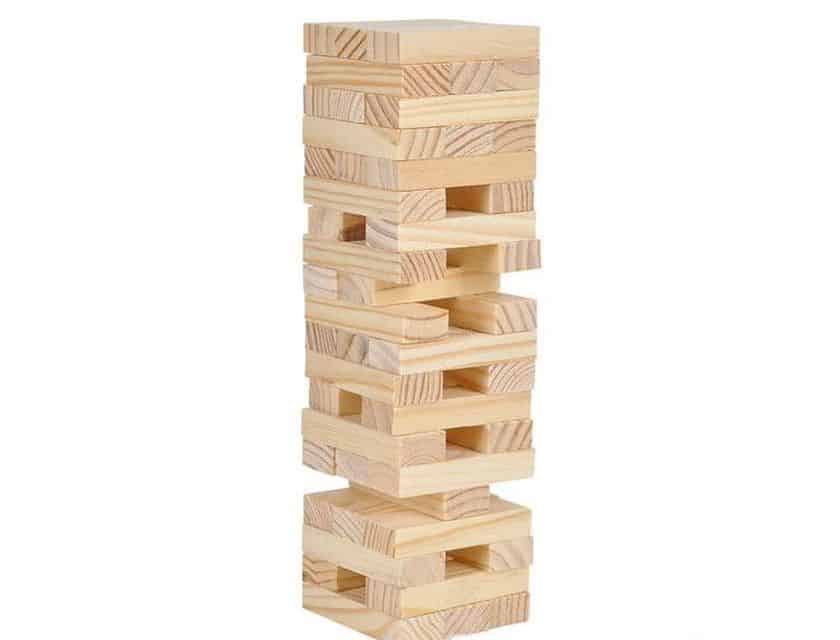
What is a simple, yet infuriating game, that makes you want to immediately play it again after you lose?
Jenga is a game made up of 54 blocks that are removed one at a time and stacked on top of each other. It was released in 1987 and is
“You take a block from the bottom and you put it on top” is that song going through your head yet? Don’t worry it will as it remains one of the most famous jingle slogans of all time.
The story of Jenga is really interesting as it has roots in an ancient game and became a huge hit in the 1980s. I don’t think I’ve ever been to a house that doesn’t have Jenga in it. It’s the perfect game no matter your age and it’s one of the few games that kids can compete straight up with adults.
It has turned into a big drinking game and you see giant block Jenga games in a lot of bars now. It’s one of those classics that is a core part of the ‘80s and ranks right up there with Monopoly and Connect 4.
Here’s the interesting story of Jenga
What Is Jenga?
OK, in case you haven’t played Jenga for some reason here’s a quick recap: The entire set is made up of 54 blocks and involves taking out one piece at a time and stacking it on top of the tower.
You can play by yourself or with as many people as you’d like. It’s also a game that can be over in a few seconds but the average play time lasts around 5-15 minutes and takes around 2 minutes to set up if you haven’t kicked over the coffee table in disgust after losing.
Each block is three times as long as it is wide and 1/5th as thick as it’s length. Each of the blocks actually has really small, and random, variations and that’s what allows them to slide out. You may have wondered why they are sometimes so easy to move out of the stack and it’s because of these little variations.
If they were all exactly the same there would be a tough time in even moving the blocks. These small variations also allow for imperfections in the stacking process so you have to adjust to each situation. It’s a simple concept but is behind what makes the game so great and challenging.
There’s a little cardboard stand that helps you build the tower and the official rules are that the person who builds the tower gets to go first. You can’t take blocks from the top level or the level beneath it and only one hand can be used to move a block. There’s also an official rule that you have ten seconds to move a block.
You lose when the tower falls over or if any piece falls from the tower that’s not the block you were trying to move. They’re real sticklers for the rules with Jenga…
The Origins Of Jenga
This may seem like a corporate game dreamed up in a big pitch meeting set in a boardroom with big time game designers. But it’s not. It’s designed by an English woman.
Leslie Scott was the co-founder of Oxford Games Ltd. and she was born and grew up in East Africa. She spoke English and also Swahili. It was the early ‘70s and the game evolved within her family by using building blocks. The family had purchased the blocks from a sawmill in Takoradi, Ghana as Ghana was a huge producer of wood.
They had come up with this simple stacking game and found it to be pretty fun and addicting to play. Leslie played around with a few names of what to call it. The first one was “chezza” which means to play. But it was also the name of their dog so she looked for something else.
They thought about what was involved with the game and that the whole principle was to basically just build. The word “Jenga” means “build” which comes from the word “cojenga” which means “to build”. After coming across this the name stuck right away.
Some people think that this is an ancient African game but it’s not and no such game exists. It seems like such a simple concept that it must have been used centuries before but Scott researched everything, as well as lived in Africa, to find out it was an original game.
There were thoughts that it was an ancient Chinese game played with jade but this seems to be the same case. There aren’t any versions of this you can find and if there were you would see a ton of modern versions of them like you see with jacks or marbles.
The First Release Of Jenga
So Jenga was not a mass manufactured game just yet. It started as more of grass roots project and some of the earliest sets were made in 1982. Scott had trademarked the name Jenga and launched the game at the London Toy Fair in 1983. She sold it through her own company called Leslie Scott Associates.
The whole thing was an English product and the original Jenga blocks were made for Scott by a company called Camphill Village Trust in Botton, Yorkshire.
The game was a hit at the toy fair and
Taking Jenga To A Wider Market
An entrepreneur from California named Robert Grebler was the brother of a close friend of Leslie Scott’s. He saw some promise in the game and was seeing that she did too since she was investing her own money to market and sell it in England. She was certain it was something worthwhile to pursue and he picked up on that.
He thought it would be a good fit in Canada for some reason but thought since they’re just America’s hat you may as well see if the Yanks might like it too. He got the rights for Jenga from Scott for use in Canada and the U.S. This was in April of 1985 and later that year she gave him the full world wide rights.
Grebler would assign these rights to Pokonobe Associates which was a company he put together. He was so certain of the potential in Jenga that he recruited two of his cousins to form Pokonobe Associates in 1985 to be able to increase the distribution of Jenga.
Pokonobe Associates would then connect with toy company Irwin would be the first to distribute Jenga in Canada. I’m Canadian and I had no idea Irwin was a Canadian company. I continue to find ways to let down my nation.
The Problem With The Name
Grebler was on board with the name Jenga, Scott obviously was, but the name was holding Irwin back a bit and they weren’t’ sure about promoting Jenga if this was to be the name.
The name Jenga didn’t mean anything to anyone and did not indicate anything to do with what it was or how you would play it. Later on, of course, the name Jenga would be synonymous with the game and would never need to be explained. But before this there was a real concern.
They weren’t just unsure about the name, they absolutely hated it. But they did love the game. Also, at this point, Scott had switched the name up a bit and was calling it “Jenga: The Perpetual Challenge”.
This was even more of an issue because dumb North Americans like me wouldn’t even know what the hell perpetual even meant. Irwin said no way on perpetual and no way on the name Jenga.
As Scott describes it, Irwin’s viewpoint was that no one had ever come across the game before and you couldn’t even say that it was like something else. Irwin thought if you had a meaningless name that gave no indication on how the game is played then it means nothing. They had no idea how they would sell, market or advertise something called Jenga.
Irwin wanted to call it TImber! (their exclamation point not mine) and possibly Tumbling but Scott was steadfast and stuck to her guns. She said that they just needed to stick with it and one day the name would have meaning. She was a smart cookie.
Eventually they agreed that the name would be Jenga and they went full on with it.
Launching Jenga
Irwin has embraced the name and decided to not downplay it but make it a key focus in the launch of the game. A key marketing phrase would be the simple “great game with the strange name”.
Now they had to get it out on the market.
Jenga was a huge hit when it was demonstrated at the 1986 Toronto Toy Fair and 400,000 orders were placed right then which is pretty nuts. So this was promising for it’s full on release. An insanely catchy song and commercial were put out that would help create massive interest and at least get the song stuck in everyone’s head. Like it is in yours right now.
Jenga would be fully released in 1987 and there was still some of the distributing that was needed working out. Irwin was licensed to sell Jenga in Canada and would be the master licensee worldwide. They could then choose who they wanted to distribute the game in any different country.
For the U.S they went with Schaper Toys who had been making toys and games since 1949. They were one of the first toy companies to make games out of plastic compared to the paper and cardboard used by other companies. Schaper made games like “Ants In The Pants”.
Hasbro would acquire Schaper and would launch Jenga under the Milton Bradley name. Hasbro would eventually take over most of the licensing for Jenga around the world. Jenga did well out of the gate and continually sold at least 4 million units a year all the way to the year 2000.
Other Versions Of Jenga
Over the years there have been other various versions of Jenga released. There was “Throw
There was Jenga “Truth or Dare” which I had never heard of and it was more of an adult version but still marketed by Hasbro. It looked just like regular Jenga but there were three different colors of blocks. I don;’t even want to know what the hell people did with this.
There was Jenga Xtreme which used parallelogram-shaped blocks that would be able to create some pretty crazy looking towers.
And then there is the Jenga Giant and Jenga XXL which are the massive ones that you can find in bars but also buy on places like Amazon. Some of them get up to 4 or 5 feet high and when playing it can reach up to 8 feet. They use the same rules but you can use two hands to move the 18-inch blocks.
And that leads us to…
The Jenga Drinking Game
Also known as Drunk Jenga the Jenga Drinking game involves a normal Jenga set but you write out various dares or actions on the blocks. No one is to see them and then you set up the tower like you normally would.
Now you have 54 blocks with 54 different twists which can be having to sing something stupid or make an animal noise. Plus there are lots of shots.
I’ve obviously suggested more PG versions of the challenges and you can imagine how sketchy things get. The one constant is if you’re the d-bag who knocks the tower over you have to chug your whole pint then have to pick two blocks and carry out those actions.
Wrapping It Up
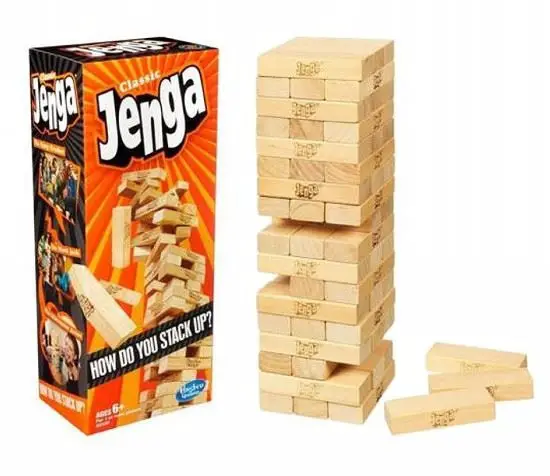
Jenga is an amazing game. It was launched during the golden age of video games where we were experiencing games that we never thought possible. Atari, Nintendo, Sega, Commodore 64 and others like it were completely demanding our focus. There were so many new toys and cartoons and things vying for our attention but a simple game was still able to make an impact.
It speaks to it’s simplicity but playability that even though we were experiencing all these new monumental toys and video games there was something special about a tower of blocks.
It must appeal on some level to our inner toddler where we were still fascinated by blocks and building something up and watching it fall over.
Jenga plays so well as it require focus and skill and it immediately draws you in.
Here’s one big takeaway regarding game play strategy that I don’t think a lot of people know. I sure didn’t and it’s this, you are allowed to use you wrist and arm to keep the tower steady while you are taking away a block…
There’s always the impression that you can only use your fingers to take away the blocks and you can only use one hand. That’s true but you can use your arm to support the tower.
This is reiterated from Leslie Scott, THE CREATOR HERSELF, who points out that rule #9 says:
“no part of the players body may touch the tower apart from the arm between the elbow and the hand”.
Now you can really stick it to everyone the next time you play. Leslie Scott’s got your back.

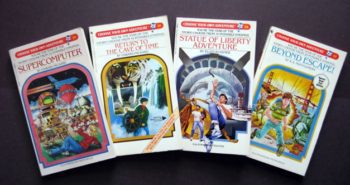
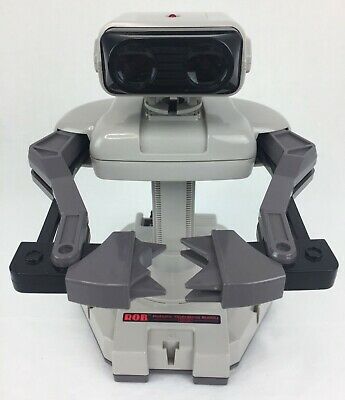
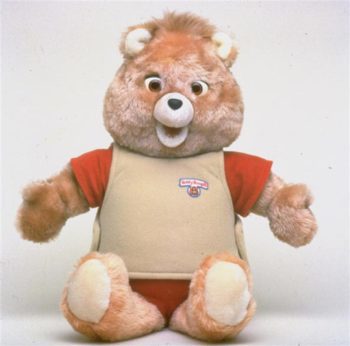
Comments
Comments are closed.